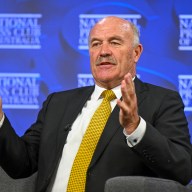By Sam Forgione
NEW YORK (Reuters) – Several of this year’s top-performing bond funds are sticking with high-yield “junk” bonds, convinced that a global hunt for returns will keep the speculative-grade U.S. corporate debt on course for its best year since the financial crisis. With major central banks’ money-printing and near-zero policy rates keeping government bond yields low or even negative, investors have been piling into riskier U.S. corporate bonds, lifting prices by almost 18 percent since February. (Graphic: http://tmsnrt.rs/2bcRnwQ ) Managers of those best-performing funds told Reuters they expected the higher returns to keep outweighing concerns about the rate of bond defaults, which hit a six-year high of 5.1 percent last month. (Graphic:http://tmsnrt.rs/2aL5Jb8) In the energy sector, more than one in seven bonds have gone into default, according to Fitch Ratings. A 70 percent recovery in U.S. crude prices since February, however, has helped ease the concerns about the sector’s health. “There is a lot more room to run for high-yield,” said Ford O’Neil, manager of the $25.2 billion Fidelity Total Bond Fund So far the upswing has delivered a total return of over 13 percent this year, according to Barclays data, but not everyone is convinced it will continue.
The rally “feels very, very long in the tooth,” said Keith Berlin, director of global fixed income and credit at investment advisory firm Fund Evaluation Group.
Average junk bond prices have risen to 98.52 cents on the dollar as of Thursday from a 6-1/2- year low of 83.82 cents touched on Feb. 11. At 6.48 percent, average yields are nearly a third below long-term average of around 9.35 percent, according to Barclays data. Bond giant Pacific Investment Management Co, Pimco, which oversees $1.5 trillion in assets, has been reducing junk bonds to “neutral” positions after their huge run.
Yet managers of bond funds at Loomis Sayles and Wells Fargo, along with Fidelity, offered several reasons why high-yield bonds remained attractive.
Steady U.S. economic growth is one factor supporting the bonds, they said, even with one Federal Reserve interest rate rise factored in.
As of Thursday, those funds have beaten at least 95 percent of their peers, according to Morningstar.
PIPELINES AND BANKS
Fidelity’s O’Neil said the fund held junk bonds from all sectors, but was particularly bullish on oil pipeline companies and financials. He said pipelines were less sensitive to swings in oil and gas prices, while tougher capital requirements had made banks safer. O’Neil said he expected high-yield market as a whole to rise by further mid-to-high single percentage digits over the next 12 months.
The fund managers said that despite the narrowing spreads over safe-haven U.S. government debt and investment-grade corporate bonds to their tightest in roughly a year, junk bonds still offered considerably more than less risky assets. “It’s all about trying to capture yield wherever you can in a low-yield or even negative-yield global environment,” said Peter Palfrey, manager of the roughly $6 billion Loomis Sayles Core Plus Bond Fund As of Thursday U.S. high-yield corporate bonds offered more than 5 percentage points above the average yield on U.S. Treasuries of around 1.24 percent, and about 368 basis points over the yields on investment-grade corporate debt. Palfrey said his fund had about 17 percent of its assets invested in high yield corporate bonds compared to an average of 11-12 percent over the past decade. While the fund was selling some high-yield bonds to realize gains, it was also buying newly-issued junk debt, he said. He said expectations that oil prices have bottomed out and would top $50 a barrel within a year made the fund bullish on energy exploration and production companies.
Ashok Bhatia, manager of the roughly $510 million Wells Fargo Core Plus Bond Fund All told, “The total return for high-yield this year will probably be one of, if not the, best years for high-yield since the crisis,” Bhatia said.
(Reporting by Sam Forgione; Editing by Jennifer Ablan and Tomasz Janowski)
















